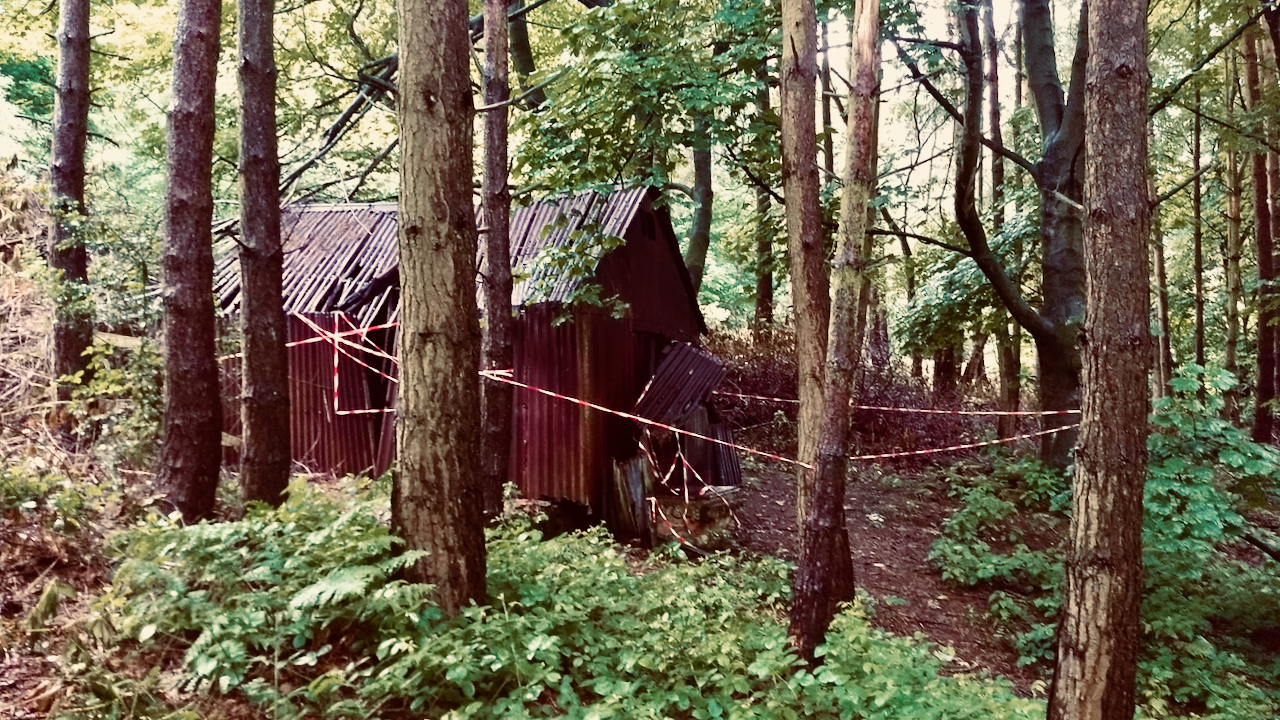I have been saving this up for a rainy day; and it was a bit damp this morning.
I understand it was part of the water supply for the Cleveland Lodge Estate, home of the Fry family and was one of at least five springs around the edge of the moors from which water was collected. Inside it certainly has the layout of being used for water treatment, two sunken settling tanks, so I have no reason to doubt this history.
It seems that the wood and corrugated steel building is dilapidating fast. The red and white warning tape is a recent addition (well since lockdown began).
Large landowners were wealthy enough to have their own water supply. For the village folk of Great Ayton, they had to make do with wells. Many did have their own private well too but for a lot of the folk, they had to visit the public wells, of which there were several in the village, and carry the water back to their houses in pails. An example of a public well can be seen on the High Green, but this has been relocated from its original position in Park Square.
The problem with the wells was that Ayton sits on a bed of impervious clay which means that the ground water is particularly susceptible to contamination. (Apart from Low Green that is, which overlays a bed of gravel and sand, meaning the water is filtered and hence cleaner). During a particularly bad outbreak of scarlet fever in 1877, one resident wrote to the Northern Echo1“CORRESPONDENCE.” Northern Echo, 7 Sept. 1877. British Library Newspapers, link-gale-com.ezproxy.is.ed.ac.uk/apps/doc/BA3200153146/GDCS?u=ed_itw&sid=bookmark-GDCS&xid=a3d0c8fe. Accessed 6 July 2021.:
Naturally a most healthy village, Ayton is, owing to the narrowmindedness and stupidity of the bulk of its inhabitants, poisoned by its own sewage, and owing to the absence of a Local Board or other competent authority a class of dwellings exists and is still being built totally unfit for human habitation, and destitute of the commonest sanitary appliances. The water supply is entirely derived from wells and springs, most of which are unprotected from contamination by either sewage or surface filth. At a parish meeting in which a few sanitary improvements were suggested by some of the new-comers to the place the opposition was almost unanimous, and one ” wiseacre ” summed up his own and the bulk of the inhabitants’ opinion by the remark ” Why t’ place was gud eneuf for our granfaythers and granmithers, and its quite god eneuf for us and if these furiners don’t like it, why they can gan somewhere else.” Perhaps the present epidemic will cause the inhabitants to awaken up, otherwise the Local Government Board will most probably feel compelled to take some very stringent measures to arouse them to a sense of their responsibility in a matter affecting solely their own health and the lives of their children.
New wells were eventually dug but the problems continued and it wasn’t until 1929 that the Tees Valley Water Board provided a piped supply to the village. However, even then landlords were reluctant to be connected because being in a Yorkshire village, they had to pay a charge. Gribdale Terrace remains to this day on a private supply from another spring on Ayton Banks.
Main source: “WATER SUPPLIES in GREAT AYTON.” By Dennis Tyerman and Ian Pearce. http://greatayton.wdfiles.com/local–files/utilities/Great-Ayton-Water-Supply.pdf [Accessed 6 July 2021]
- 1“CORRESPONDENCE.” Northern Echo, 7 Sept. 1877. British Library Newspapers, link-gale-com.ezproxy.is.ed.ac.uk/apps/doc/BA3200153146/GDCS?u=ed_itw&sid=bookmark-GDCS&xid=a3d0c8fe. Accessed 6 July 2021.

Leave a Reply